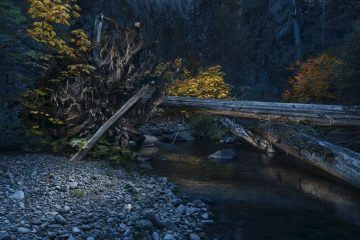Vincent Miller at Commonweal:
 This work attending to the fullness of creation has revealed astounding complexity. As we walk through the forest, we notice plants and animals around us, but often we literally miss the forest’s interconnections for the trees. The greatest part of its biodiversity lies below ground, where thousands upon thousands of species of worms, arthropods, and insects live, each hosting a different bacterial community in its gut. We used to think of soil as a test tube full of chemicals, but now know that it’s a complex biological network; we are only beginning to understand its thousands of parts. These are “trophic” networks: who eats what and whom. The complexity goes far beyond predator and prey. Everything from a fallen evergreen needle to a tree is consumed, and the droppings of the consumers are consumed by yet other species through cycles upon cycles.
This work attending to the fullness of creation has revealed astounding complexity. As we walk through the forest, we notice plants and animals around us, but often we literally miss the forest’s interconnections for the trees. The greatest part of its biodiversity lies below ground, where thousands upon thousands of species of worms, arthropods, and insects live, each hosting a different bacterial community in its gut. We used to think of soil as a test tube full of chemicals, but now know that it’s a complex biological network; we are only beginning to understand its thousands of parts. These are “trophic” networks: who eats what and whom. The complexity goes far beyond predator and prey. Everything from a fallen evergreen needle to a tree is consumed, and the droppings of the consumers are consumed by yet other species through cycles upon cycles.
Below ground lives another complex web that facilitates one of the most astounding sets of relationships in the forest: mycorrhizal fungi. Unlike saprophytic fungi which live on decaying matter, mycorrhizal fungi live in symbiosis with living plants. Scientists have known these soil fungi are important for more than a century.
more here.
